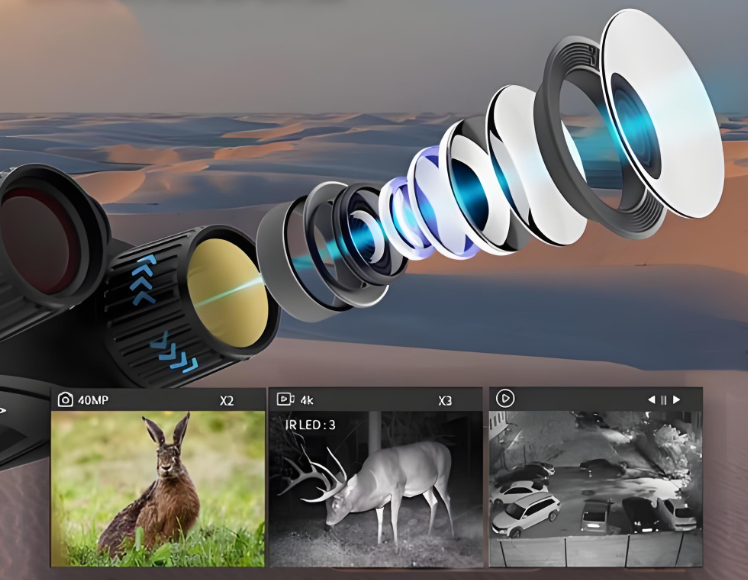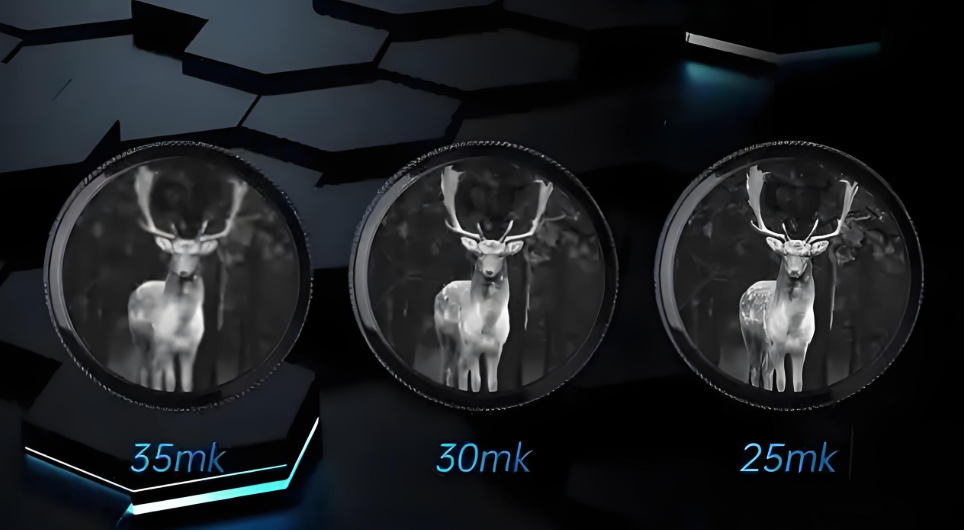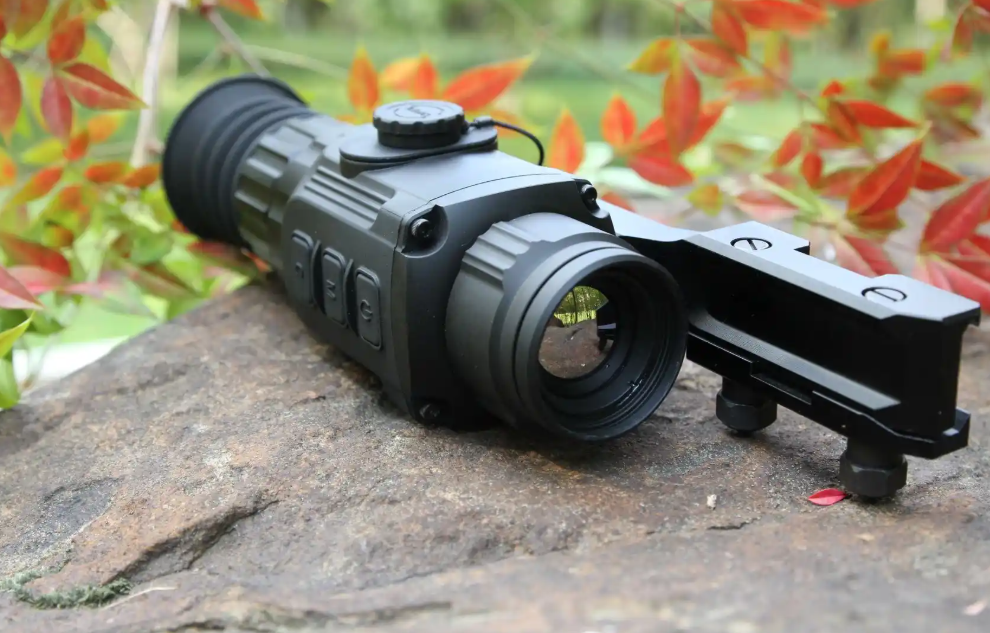Infrared night vision goggles are optoelectronic devices that can observe targets in dark environments. They are widely used in security, field observation and other fields. So, how do we judge the quality of an infrared night vision goggles? This article will analyze the evaluation criteria of infrared night vision goggles in detail from multiple angles to help you make a wise decision when purchasing.

1. Resolution - How clear can you see?
Resolution is an important indicator to measure the imaging quality of infrared night vision goggles. It determines how much detail you can see and whether you can distinguish distant objects. Generally speaking, the higher the resolution, the clearer the image.
Common resolutions on the market are:
640×480: entry-level, suitable for short-distance observation
1280×960: mid-range level, can meet most usage needs
1920×1080: high-end product, can achieve long-distance high-definition observation
It is recommended to choose a suitable resolution according to your own needs. Too high may cause unnecessary expenses.
2. Detection distance - how far can you see?
The detection distance directly affects the practicality of night vision goggles. It depends on multiple factors, such as sensor sensitivity, lens focal length, etc. Generally speaking:
Entry-level products: 300-500 meters
Mid-range products: 500-1000 meters
High-end products: more than 1000 meters
The actual use scenario needs to be considered when choosing. Too long a detection distance may increase the cost and weight.
3. Image enhancement technology - how clear can you see?
Advanced image enhancement technology can greatly improve night vision. Common technologies include:
Digital noise reduction: reduce image noise and improve clarity
Dynamic range extension: enhance light and dark contrast
Edge sharpening: highlight the outline of objects
High-end products usually integrate a variety of image enhancement technologies, but also increase the price accordingly.

4. Lens quality - how is the optical performance?
Lens quality directly affects the imaging effect. High-quality lenses have the following characteristics:
High transmittance: allow more light to enter the sensor
Low dispersion: reduce color distortion
Multi-layer coating: improve anti-reflection ability
When purchasing, you can pay attention to parameters such as lens material and number of coating layers.
5. Sensor performance - core components determine the upper limit
The sensor is the "eye" of the infrared night vision device, and its performance determines the upper limit of the device. Key indicators include:
Pixel size: The larger the more sensitive, but may affect the resolution
Signal-to-noise ratio: The higher the image, the clearer it is
Quantum efficiency: reflects the efficiency of photoelectric conversion
High-end products often use advanced sensor technology, such as back-illuminated and stacked.
VI. Protection level - How durable is it?
Night vision devices used outdoors need to have certain protection capabilities. The IP protection level is an important reference:
IP65: dustproof and water-proof
IP67: dustproof and can be immersed in water for a short time
IP68: dustproof and can be immersed in water for a long time
When choosing, you need to weigh the relationship between the protection level and weight and price according to the use environment.
VII. Battery life - How long can it last?
Battery life needs to be considered for long-term use. Generally speaking:
4-6 hours: basically meet daily use
8-10 hours: suitable for long-term field operations
More than 10 hours: high-end product standard
Also pay attention to factors such as charging method and whether fast charging is supported.
VIII. Operation convenience - is it easy to use?
Complex operations may affect the user experience. When evaluating the convenience of operation, you can consider:
Button design: Is it ergonomic
Menu structure: Is it intuitive and easy to understand
Quick function: Does it support quick call of common functions
High-end products may be equipped with advanced interactive methods such as touch screen and voice control.

IX. Additional functions - What can it do?
In addition to basic night vision functions, some products also provide additional functions:
Video/photo: record observation content
GPS positioning: mark location information
WiFi transmission: real-time sharing of images
These functions may increase the price of the product, and actual needs must be weighed when choosing.
X. Compatibility - Can it work with other devices?
Consider the compatibility of night vision goggles with other devices:
Does it support external displays?
Can it be connected to mobile phone apps?
Is it compatible with common accessories (such as tripods)?
Good compatibility can expand the use scenarios of the device.
XI. Brand reputation - Is it trustworthy?
When purchasing, you should also pay attention to brand factors:
R&D strength: Is there core technology?
After-sales service: What is the warranty policy?
User evaluation: What is the actual use experience?
Well-known brands are usually more secure, but you should also be wary of some false propaganda.
12. Cost-effectiveness - Is it worth the price?
Finally, we need to comprehensively consider the relationship between various indicators and prices:
Entry-level (1000-3000 yuan): basic night vision function
Mid-range (3000-10000 yuan): comprehensive performance improvement
High-end (10000 yuan and above): professional-level performance
When choosing, you need to find the one that suits you best based on your budget and needs.
13. User experience - how is the actual effect?
Paper parameters are important, but the actual user experience can better explain the problem. If possible, it is recommended to:
Field test: personally experience the effect under different lighting conditions
Consult professionals: get professional opinions
Read user reviews: understand the long-term use experience
This information can help you make a more accurate judgment.
14. Upgrade potential - can it keep pace with the times?
Technology is developing rapidly, and a good infrared night vision device should have certain upgrade potential:
Software update: Is it regularly pushed for optimization?
Hardware expansion: Can new functional modules be added?
Technical support: Does the manufacturer continue to invest in research and development?
Products with upgrade potential can avoid rapid elimination to a certain extent.

15. Environmental adaptability - how does it perform under various conditions?
Different environments have different requirements for night vision devices:
Temperature adaptability: Can it work under extreme temperatures?
Humidity tolerance: Can it be used normally in high humidity environments?
Anti-interference ability: Is it affected by strong light and electromagnetic interference?
Excellent infrared night vision devices should be able to adapt to various complex environments and maintain stable performance.
Conclusion
Choosing an excellent infrared night vision device is not an easy task, and we need to conduct a comprehensive evaluation from multiple angles. From basic resolution and detection distance, to advanced image enhancement technology, sensor performance, to practical considerations such as battery life and ease of operation, each aspect deserves our careful consideration. At the same time, we must also consider factors such as product compatibility, brand reputation, cost-effectiveness, and even pay attention to its future upgrade potential and environmental adaptability.


